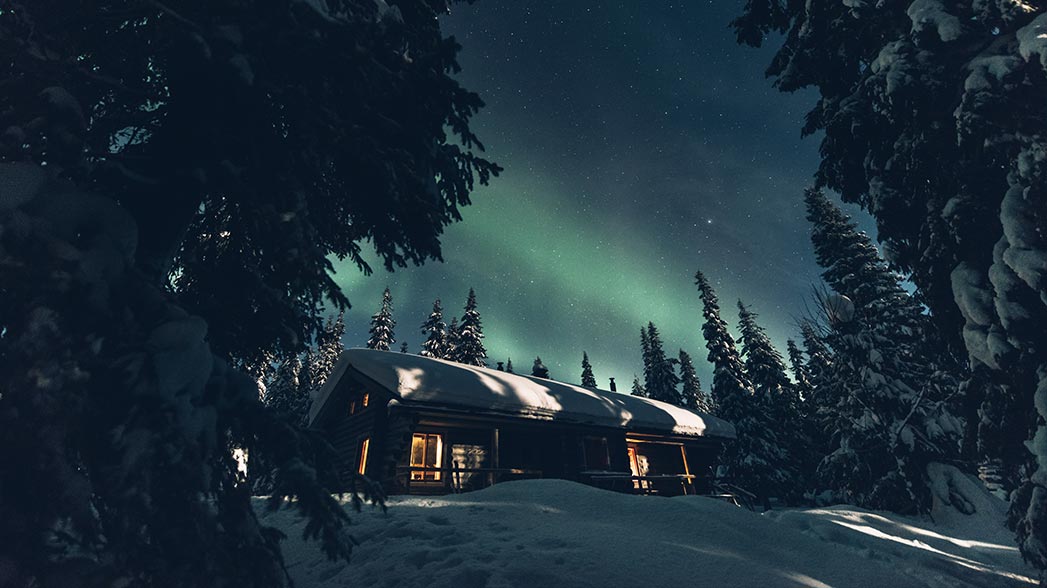Aurora Spotting and Stargazing
Seeing the Northern Lights is an unforgettable wintertime experience. Among the most northerly countries in the world, Finland is an excellent place to look to the sky for the Northern Lights, also known as the Aurora Borealis. One third of Finland is located above the Arctic Circle and even Helsinki, located in the southern coast of Finland, hits a quite northerly location, 60°N. The northerly location enables you to spot the Northern Lights for approximately eight months a year, from early September to the end of April. Your chances to see the Aurorae increase the further north you go. In the end, it all just depends on solar activity, the weather, and how lucky you are.

Stargazing, too, is definitely one of the most accessible natural experiences. All you have to do is to just step outside on a clear night. National Parks and other protected areas have very little light pollution and therefore, they are ideal places for both aurora spotting and stargazing. Night sky activities can be easily combined with other activities, such as cross-country skiing, snowshoeing, or hiking (apart from hiking in summer months when there is plenty of daylight).
Good to know about aurora spotting
To witness the aurora borealis, the following conditions must be met:
● No (or very little) light pollution. National Parks and other protected areas are usually far from settlements so there is very little light pollution.
● It’s dark. After summer, days start getting shorter. The aurorae can be seen from September through April. During the Full Moon it’s hard to spot them
● No (or very little) clouds
● Enough solar activity
These last two conditions can be researched prior to looking for the Aurora, by referencing the aurora forecast and cloud cover forecast. However, it is impossible to know more than a few days or hours in advance what the forecast will be.
To ensure that you have the best chance to see the aurora is to travel to Northern Finland. Lapland has longer hours of darkness, and it thus provides more opportunities to see the aurora. In Rovaniemi, at the winter equinox around December 22nd, you will have about twenty hours of darkness, while in the northernmost regions, the sun doesn’t rise at all.
Enquire local outdoor service providers about organized activities. Many of them do not only offer activities, but they often know the best spots in the area to view the Northern Lights. Among other unforgettable activities, guided snowshoe excursions combined with aurora hunting are popular and widely available in Northern Finland.

Good to know about star-gazing
Apart from solar activity, all above-mentioned conditions must be met also when stargazing. Some of the easiest constellations to spot in Finland are Ursa Major, Ursa Minor, Cassiopeia, Orion, Cygnus, and Lyra. Besides stars and constellations, there are multiple other objects to view, such as the Moon, the Planets such as Jupiter and Venus, shooting stars, comets, and the Milky Way. Acquiring a field guide to the constellations of the north is a good way to start.
